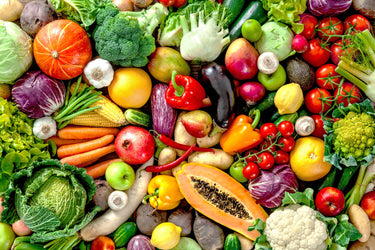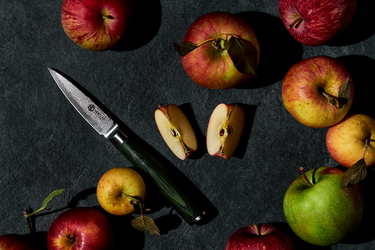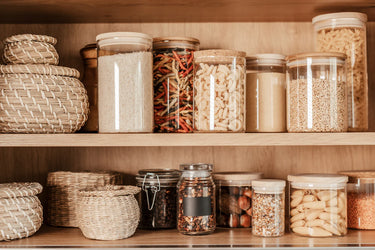How To Cut Down On Food Waste At Home

It’s easy to have the best intentions when it comes to grocery shopping. A bundle of radishes looks bright and appealing at the store, only to languish in the crisper until they’re tossed, not without some guilt, into the compost, or worse, the trash.
It’s not only hard on the budget to waste food, it has an effect on the planet, too. Global food waste is a significant contributor to climate change—an estimated third of all food produced is lost or wasted each year and is responsible for half of the annual greenhouse gas emissions emitted by the global food system.
Animal-based foods have a higher carbon footprint than plant foods, so eating less meat, dairy, and eggs is beneficial for reducing your own impact on the environment. But what can you do to stop wasting food at home?
Easy Ways To Cut Down on Food Waste
Shop more often and stick to your shopping list
Meal planning for a whole week is great in theory, but humans are bad at estimating how they’ll feel in the future. Chicken cacciatore sounds great on Sunday, but by Thursday you might be craving takeout pizza. Research by Victoria Ligon at the University of Arizona found that buying in bulk actually causes more food waste rather than less, and we are rarely aware that this contributes to waste. Rather than shopping optimistically, only to throw out food later, buy what you need for the next few meals.
A good rule of thumb: If you’re not planning to cook a fresh fruit or vegetable within 4 days, don’t buy it.
Buy the odd-looking fruit and veg
“Ugly” produce is often tossed before it is even sent to stores. Look for subscription services that rescue the less-than-perfect fruit and vegetables. Imperfect Foods and Misfit Vegetables are two good options in the US, and if you’re in the UK, OddBox does the same thing.
Reassess the “best by” dates on packaging
If food looks rotten, has mold, or smells bad, it’s time to toss it. But just because a food has passed the “best by,” “sell by,” or “best if used by '' date doesn’t mean it’s gone bad. As long as food is stored properly and isn’t way beyond its expiration date, it should be okay to eat. Start by looking and smelling the food. If you want to be extra sure, check out the FoodSafety.gov’s FoodKeeper app, where they share storage tips for pantry, refrigerator, and freezer for most foods.
Cook smaller portions
Wasted leftovers are one of the biggest contributors to consumer food waste. We get it: palate fatigue is real. That stew that tasted great the first or even second time can start to feel like a burden when it’s the plan for the entire week. Rather than make big batches, cook things you can finish in one or two meals. If you want to make something big-batch, make use of your freezer for the extra servings. That way you can feel excited when the stew is back on the menu.
Invest in food storage containers
Without the proper equipment to store food, it’s likely to go to waste. If you want to bring leftovers for lunch, or prep meals for the week, it can be helpful to portion the food in advance. That way you reduce friction when it’s time to head to work, for instance. Though a vacuum sealer is not necessary for storing food at home, it can be helpful for storing leftovers in the freezer. Fill the bag with the leftovers, seal, then lay flat on a tray so they freeze solid in a thin layer. Then, label and stack for easy, organized storage.
Start composting
Composting isn’t just for cooks with home gardens. Now, many cities collect food waste directly from homes. Or, you might be able to find a collection point at a farmers’ market. You might be surprised what can be composted! Fruit and vegetable scraps, tea bags, coffee grounds, egg shells, paper towels, bread or other baked goods, and dairy products can all be composted. If you’re not processing your own compost at home, check your local collection point’s guidelines for what you can throw into your bin. Some ask that you leave out animal bones or other ingredients. Though you don’t need to buy a dedicated composting bin for your compost, it can be helpful to have one. Fill it with a compostable bag, add your scraps, then take directly to the point of collection.
Save your vegetable scraps to make stock
Homemade stock is not only more flavorful than store bought, when you make it from leftover bones and vegetable scraps, it’s free! Rather than throw out the trimmings from a carrot or onion, you can get a second use out of them. Keep a freezer-safe zip top bag handy when you’re prepping ingredients for other dishes. Add the peels and trimmings to the bag, then return to the freezer. Add any bones from roasts or leftovers, too. Once the bag is full, then you’re ready to make a batch of homemade stock.





